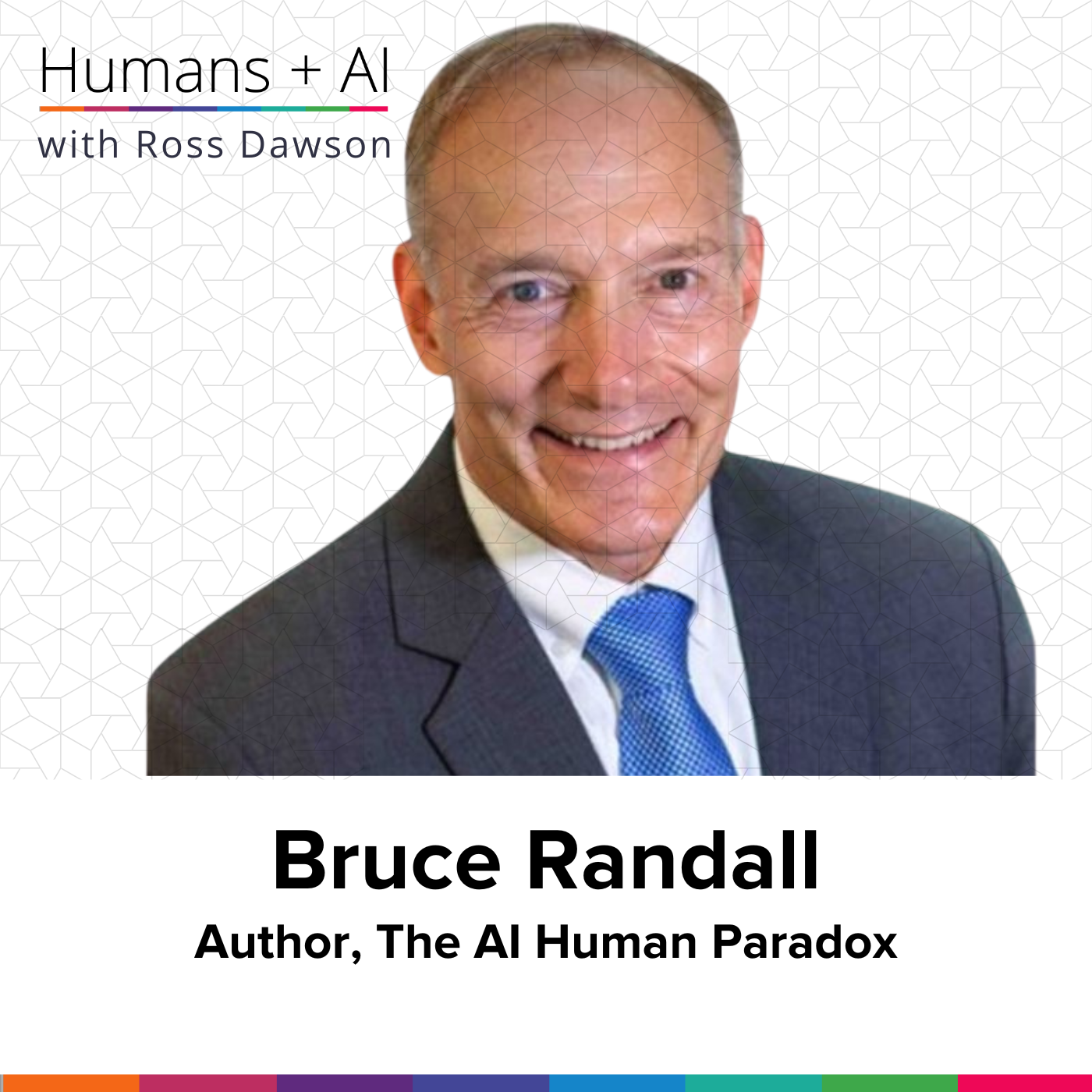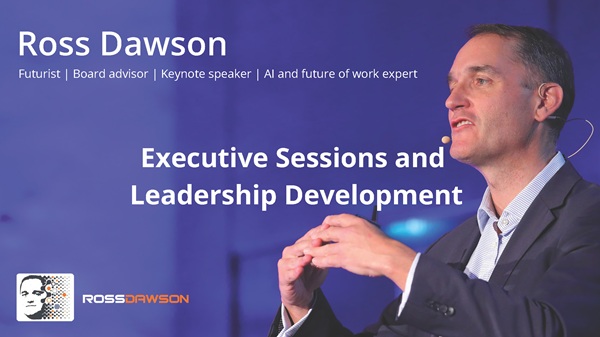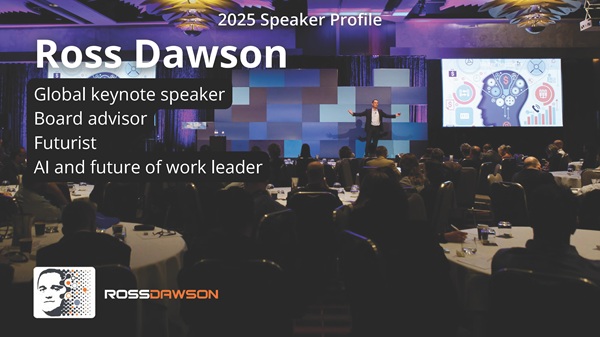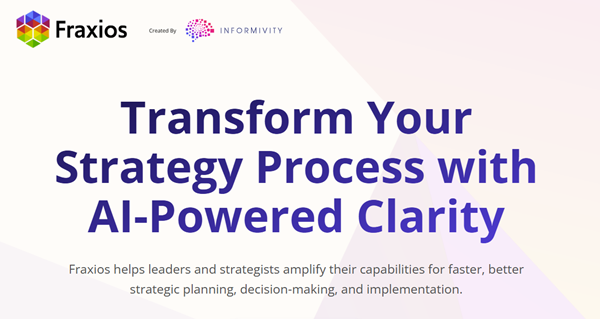I feel that the frequency I have, and the frequency AI has, we’re going to be able to communicate based on frequency. But if we can understand what each is saying, that’s really where the magic happens.
– Bruce Randall

About Bruce Randall
Bruce Randall describes himself as a tech visionary and Reiki Master who explores the intersection of technology, human consciousness, and the future of work. He has over 25 years of technology industry experience and is a longtime practitioner of energy healing and meditation.
What you will learn
-
Exploring brain-computer interfaces and human potential
-
Connecting reiki and AI through frequency and energy
-
Understanding the limits and possibilities of neural implants
-
Balancing intuition, emotion, and algorithmic decision-making
-
Using meditation to sharpen awareness in a tech-driven world
-
Navigating trust and critical thinking in the age of AI
-
Imagining a future where technology and consciousness merge
Episode Resources
Transcript
Ross Dawson: Bruce, it’s a delight to have you on the show.
Bruce Randall: Well, Ross, thank you. I’m pleased to be on the show with you.
Ross: So you have some interesting perspectives on, I suppose, humanity and technology. And just like to, in brief, hear how you got to your current perspectives.
Bruce: Sure. Well, when I saw Neuralink put a chip in Nolan’s head and he could work the computer mouse with his thoughts, and he said, sometimes it goes where it moves on its own, but it always goes where I want it to go.
So that, to me, was fascinating on how with the chip, we can do things like sentience and telecommunications and so forth that most humans can’t do. But with the chip, all of a sudden, all these doors are open now, and we’re still human. That’s fascinating to me.
Ross: It certainly extends, extending our capabilities. It’s done in smaller ways in the past and now in far bigger ways. So you do have a deep technology background, but also some other aspects to your worldview.
Bruce: I do. I’ve sold cloud, I’ve been educated in AI at MIT, and I built my first AI application. So I understand it from, I believe, from all sides, because I’ve actually done the work instead of read the books.
And for me, this is fascinating because AI is moving faster than anything that we’ve had in recent memory, and it directly affects every person, because we’re working with it, or we can incorporate it in our body to make us better at what we do. And those possibilities are absolutely fascinating.
Ross: So you describe yourself as a Reiki Master. So what is Reiki and how does that work? What’s its role been in your life?
Bruce: Well, Reiki Master is you can connect with the universal energy that’s all around us, and it means I have a bigger pipe to put it through me, so I can direct it to people or things.
And I’ve had a lot of good experiences where I’ve helped people in many different ways. The Reiki and the meditation came after that, and that brought me inside to find who I truly am and to connect with everything that has a vibration that I can connect with.
That perspective, with the AI and where that’s going—AI is a hardware, but it produces software-type abilities, and so does the energy work that I do. They’re similar, but they’re very different.
And I believe that everything is a vibration. We vibrate and so forth. So that vibration should be able to come together at some point. We should be able to communicate with it at some level.
Ross: So if we look at the current state of research, scientific research into Reiki, there seems to be some potential low-level and small-population results. So it doesn’t seem to be a big tick.
It doesn’t—there’s—there does appear to be something, but I think it’s fair to say there’s widespread skepticism in mainstream science about Reiki. So what’s your, I suppose, justification for this as a useful perspectival tool?
Bruce: Well, I mean, I’ve had an intervention where I actually saved a life, which I won’t go into here. But my body moved, and I did that, and I said, I don’t know why I’m doing this, but I went with the body movement and ended up saving a life.
To me, that proved to me, beyond a shadow of a doubt, that there’s something there other than just what humans can see and feel. And that convinced me.
Now, it’s hard to convince anybody else. It’s experiential, so I really can’t defend it, other than saying that I have enough experiences where I know it’s real.
Ross: Yeah, and I think that’s reasonable. So let’s come back to that—the analogy or linkage you are painting between the energy, underlying energy and Reiki that you experience, and the AIs, I suppose, augmentation of humans and humanity.
Bruce: Well, everything has a vibration or frequency. So music has a frequency. People have a frequency. And AI has a frequency.
So when you put AI in somebody, there’s the ability at some point for them to communicate with that AI beyond the electrical signal communication. And if that can be developed with the electrical signal from the AI chip, that person can grow leaps and bounds in all areas—instead of just intelligence—but they have to develop that first to do that.
Now, AI is creating—or is potentially creating—another class of people. Whereas Elon said in the first news conference, if you’re healthy and you can afford it, you too can have a chip. So that’s a form of commercialization.
You may not need to be a quadriplegic to get a chip. If you can afford it, then you can have a chip potentially too. So that puts commercialization at a very high level.
But when it gets normalized and the price becomes more affordable, I see that as being something that more mainstream people can get if they choose to.
Now, would there be barriers or parentheses on that—where you can only go so far with it? Or if you get a chip, you can do whatever you want?
And those are some of the things that I look at as saying we’re moving forward, but we have to do it thoughtfully, because we have to look at all areas of implications, instead of just how fast can we go and how far can we go.
Ross: Yeah, well, I mean, for a long time, I’ve said that the very look at the advancement of brain-computer interfaces—first phase, of course, they’re used to assist those who are not fully abled.
And then there’s a certain point when, through safety and potential advantages, people who are not disabled will choose to use them. And so that’s still not a point which we’ve reached—or probably not even close to at this point.
But still, the massive constraint is the input-output bandwidths of the brain-computer interfaces of today. Still, the “1000 bits per second” rule, which is very similar—so it’s very low bandwidth—and there’s potential to be able to expand that. But that still is essentially bits.
It is low levels of information—input, output. So that’s a different thing to what you are pointing to, where there are things beyond simple information in and out. So, for example, the ability to control the computer mouse with your brain…
Bruce: Right. But that’s the first step. And the fact that we got to the first step and we can do that—it’s like we had the Model A, and all of a sudden, a couple decades later, we’ve got these fancy cars.
That’s a huge jump in a relatively short period of time. And with all the intelligence of the people and the creativity of the scientists that are putting this together, I do believe that we’re going to get advances in the short and medium-long term that are really going to surprise people.
On what we can do as humans with AI—either embedded or connected in some way or fashion—because you can also cut the carotid and put a capsule in, and you’ve got AI bots running throughout your body.
Now that’s been proven—that that works—and that’s something that hasn’t gotten a lot of press. But we’ve got other ways that we can access the body with AI, and it’s a matter of: we have to figure out which is best, what the risks are, what the parameters are, and how we best move forward with that.
Ross: Yeah, it sounds like you’re referring to Synchron, which is able to insert something into the brainstem through the carotid. But that’s not what’s through the body—that’s simply just an access point to the brain for Synchron.
Which is probably a stronger approach than the—well, can be—than the Neuralink swarm, which is directly interfacing with the brain tissue.
So what do you—so, one of the—if you think about it as an input-output device, that’s quite simple, as in the sense of, we can take information into our brain, whatever sense. So that’s still being used a bit less.
And we can also output it—as in, we can basically take thoughts or directions and use that as outputs to devices. So what specifically—can you point to specific use cases that you would see as the next steps for using BCIs, brain-computer interfaces, with AI?
Bruce: Yeah, I think that we’re just in the very beginning of that. And I think that there are ways to connect the human with the AI that can increase where we are right now.
I just don’t think we know the best way to do that yet. We’re experimenting in that. And I think there are many other ways that we can accomplish the same thing.
It’s in the development stages. We’re really on the upward curve of the bell curve for AI, and we’ve got a long way to go before we get to the top.
Ross: Yeah, I asked for specifics. So what specifically do you see as use cases for next steps?
Bruce: Well, for specifics, I see in people with science and medical, I think there are significant use cases there where they can process faster and better with AI than we can process right now. That’s pure information.
And then they can take their intelligence they have as a human, and analyze that quickly and get it faster. In an ER situation, there is a certain amount of error in that area from mistakes that are made. With AI, that can fine-tune that so you have fewer errors and you can make better choices going forward.
There are many other cases like that. You could be on the floor trading, and everything is a matter of ratios and so forth. Or you could be in an office trading in real time on the machines. At that point, you’re looking at a lot of different screens and trying to make a decision.
If you had AI with you, that would be able to process—speed your processing time—and you could make better decisions faster, because time is of the essence in both of those examples. And AI could help in that.
Now, is that a competitive and comparative advantage? I would say so, but it’s in a good way—especially in the medical field.
Ross: Yes, so you’re talking about AI very generically, so in this idea of humans plus AI decision-making.
So, essentially, you can have human-only decisions, you can have AI decisions. In many cases, the trading—algorithmic trading—is fully delegated to AI because the humans can’t make the decisions fast enough.
So are there any particular structures? What specific ways do you see that AI can play a role in those kinds of decision-making?
I mean, you mentioned the things of being able to point to potential errors or flag those, and so on. What are other ways in which you can see decisions being made in medical or financial or other perspectives where there is an advantage to the human and AI collaboration—as opposed to having them both separate—and the ways in which that would happen?
Bruce: Well, in the collaboration, AI is getting to the point where it has hallucinations right now, so you have to get around that in order to get this in a more reliable fashion.
But once you train AI for a specific vertical, that AI is going to work better in that vertical than in an untrained vertical. So that’s really the magic in how you get that to work better.
And then AI, with the genetic, has the ability to make decisions. And you have to gauge that with the human ability to make decisions to make sure that that’s in line.
You could always put a check and balance in place where, if the AI wanted to do something in a fast-moving environment and you weren’t comfortable with that, you could say no, or you could let it go.
That’s something that could be in an earpiece. It can be embedded. There are many different ways to do that. It could be on a speaker where they’re communicating—that’s an easy way to do it.
As far as other ways to do it, I mean, we are auditory—so we see, we hear, and we speak—and that’s how we take in information. That’s what it’s going to be geared to.
And those devices are coming on right now to be developed where it all works together. But we’re not there yet.
But this is where I see it going in both those environments, where you can have a defined benefit for AI working with humans.
Ross: So one of the things which is deeply discussed at the moment is AI’s impact on critical thinking.
Many people are concerned that because we are delegating complex thinking to AI, in many cases we become lazy or we become less capable of doing some of that critical thinking.
Whereas in other domains, some people are finding ways to use AI to be able to sharpen, or to find different perspectives, or find other ways to add to their own cognition.
So what are your perspectives or beliefs, specifically on how it is we can best use AI as a positive complement to our cognitive thinking and critical thinking and our ability to develop it?
Bruce: Well, we think at a very fast rate, and scientists don’t understand the brain yet in its full capacity, and we don’t understand AI to its full capacity.
So I would say with that, we need to work in both areas to better understand them, to find out how we can get to the common denominator where both are going to work together.
Because you’ve got—it’s like having two people—you’ve got, for example, the Agentic AI, which has got somewhat of a personality with data, and then you’ve got us with data and with emotions.
Those are hard to mix when you put the emotions in it, right? We also have a gut feel, which is pretty accurate. When you put all that together, you’ve got conflicts here, and you have to figure out how you’re going to overcome that to work in a better system.
Now, once you get trust with it, you can just rely on it and move forward. But as humans, we have a hard time giving trust to something when it’s important. We rely on our own abilities more than a piece of technology.
So that bridge has to be crossed, and we haven’t crossed that yet. And at the same time, humans have done a pretty good job in some very trying situations.
AI hasn’t been tested in those yet, because we’re very early in the stages of AI. When we get to that point, then we’re going to start working together and comparing—and really answer your question.
Because right now, you’ve got both sides. They both have valid points, but we don’t yet know who’s right.
Ross: Yeah, there’s definitely a pathway to a few elements you raised there. One is in trust.
So how do we get justified trust in systems so they can be useful? Conflicts around decision-making, and to what point do we trust in our own validation of our own decision-making or thinking in a way that we can effectively, essentially, patch the better decision-makers through that external perspective or addition?
So you have deep practice or meditation, amongst other things. And we have a deluge of information which we are living in, which is certainly continuing to increase.
So what would your advice be for how to stay present and sharp and connected and be able to deal with the very interesting times we live in?
Bruce: Well, that’s a big question, but I’ll give you a short answer for that.
My experience with meditation is I’ve gotten to know myself much better, and it’s fine-tuned who I am.
Now, you can listen to a tape and you can make incremental movies with that to relax, but I suggest meditation is a great way to expand in all areas—because it’s expanded in all areas for me.
And it’s a preference. It’s an opinion based on experience. And everybody has different paths and would have different experiences in that. It’s an option.
But what I tell everybody is—because there are a lot of people that still aren’t into AI to the extent that they need to be—I say take 20 minutes to 30 minutes a day in the vertical that you’re in and understand AI and how it can enable you.
Because if you don’t do that, in two years, you’re going to be looking from behind at the people that have, and it’s going to be very hard to catch up.
Ross: So, slice of time for studying AI and slice of time for meditation, right?
Bruce: Yeah, I do. I do 30 minutes twice a day, and I fit it in for 12 years in a busy schedule. So it’s doable. May not be easy, but it’s doable.
Ross: Yes, yes. Well, I personally attest to the benefits of meditation, though I’m not as consistent as you are.
But I think, yeah, and that’s where there is some pretty solid evidence—well, very solid evidence—that meditation is extremely beneficial on a whole range of different fronts, including physical health, as well as mental well-being and ability to focus, and many other things that are extremely useful to us in the busy world that we learn….
Bruce: Scientific explanation is correct.
Ross: Yeah, yeah. And it’s very, very, very well validated for those that have any doubts.
So to round out, I mean, we’ll just paint a big picture. So I’d like to let you go wild. Where—what is the potential? Where can we go? What should we be doing? What’s the future of humanity?
Bruce: Well. That’s a huge question. And AI is not there yet.
But humans—I see, because I’ve been able to do some very unusual things with my combination—I feel that the frequency I have, and the frequency AI has, we’re going to be able to communicate based on frequency.
But if we can understand what each is saying, that’s really where the magic happens.
And I see people—their consciousness increasing—just because humanity is increasing.
And I think in—I mean, they’re discussing sentience and AI. I don’t know. I mean, I understand it, but I don’t know where they’re going with this.
Because if you weren’t born with a soul, you don’t have the sentience that a piece of software has. I mean, it can be very intelligent, but it’s not going to have that, in my opinion.
Now, will a hybrid come out with person and AI? Doubtful, but it’s possible.
There are a lot of possibilities without a lot of backup for them for the future. But I know that if you promote yourself with meditation and getting to know yourself better, everything else happens much easier than if you don’t.
And I think with AI—I mean, the sky’s the limit. What does the military have that we don’t have with AI, right?
I mean, there’s a lot of smart people working that aren’t in public with AI, and we don’t know where they are. But we know that they’re making progress, because every once in a while we hear something.
And I was watching a video on LinkedIn—they mapped the mouth area, and this person could go through seven different languages while he’s walking and talking, and his lips match the words.
That point right there, which was a month ago—I said, now I can’t—I’m not sure if I’m watching somebody actually saying something, or if it’s AI.
So we make advancements, and then we look at it and say, who can I believe now? Because it’s hard to tell.
Ross: Yes.
Bruce: So I hope that gives what I think is possible in the future. Where we go—who knows?
Ross: Yeah, the future is always unpredictable, but a little bit more now than it ever has been.
And one of the aspects of it is, indeed, the blurring of the boundaries of reality and knowing what is real and otherwise. And so I think this still comes back to—we do know that we exist.
There still is a little bit of the “I think, therefore I am,” as Descartes declared, where we still feel that’s valid. And beyond that, all the boundaries of who we are as people, individuals, who we are as humanity, are starting to become a lot less clear than they have been.
Bruce: And it will get more or less clear, I think, until it gets clearer.
Ross: So thanks, Bruce, for your time and your perspectives. I enjoyed the conversation.
Bruce: Thank you, Ross. I appreciate your time, and I enjoyed it also.
Podcast: Play in new window | Download







